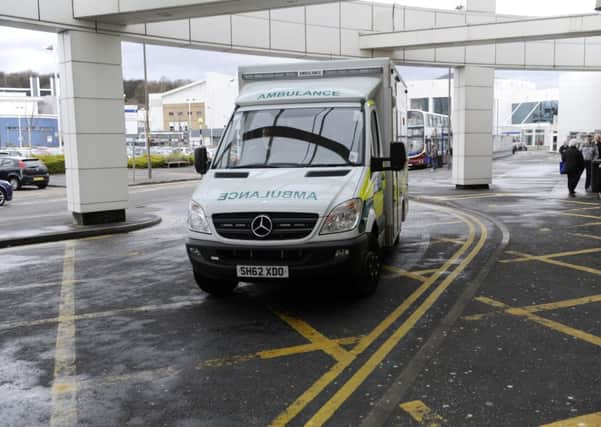Patients needlessly in A&E to be denied treatment


It is estimated that about 16 per cent of people visiting A&E do not need to be there and some Scottish hospitals are already redirecting such patients to other services, such as out-of-hours GPs and NHS 24.
Now units across Scotland will adopt the practice, under new non-emergency care guidance, to refer patients to the most appropriate service after an initial consultation.
Advertisement
Hide AdAdvertisement
Hide AdThe Scottish Government said this would help A&E departments focus on patients with emergency needs and reduce the amount of time they have to wait to receive treatment.
NHS Tayside has operated a system of directing patients to other services for a number of years. Patients are initially assessed by a senior clinician and if their injury or illness does not require emergency treatment, they are sent on to the most appropriate place for treatment, such as an out-of-hours clinic.
The Tayside system used at Ninewells in Dundee and Perth Royal Infirmary sees about 4,000 of their 80,000 A&E patients sent to other services each year.
The board has performed well in A&E targets, with 99.2 per cent of patients seen within four hours last December.
The Scottish Government said examples where patients could be referred to other services included those where people were seeking treatment for ingrown toenails, toothache or earache.
Health secretary Alex Neil said: “This new guidance will make sure that all patients are getting the right treatment, in the right place and by the right clinicians. That not only helps the NHS meet demands, but it is better for patients as they get treated quicker.”
Mr Neil said that, in some cases, out-of-hours GP services were on the same sites as A&E, so patients who would be more appropriately seen there could be referred on quickly.
But he said it was not appropriate for the doctors who saw patients before referring them on simply to treat them, as that would just encourage them to keep using A&E services inappropriately.
Advertisement
Hide AdAdvertisement
Hide Ad“Part of this is about educating people not to come to A&E unless it is an accident or an emergency,” he said. “If we keep treating people just because they turn up then people will continue to turn up in droves at A&E.”
Mr Neil said an estimated one in six patients who turned up at A&E would be more appropriately treated elsewhere.
Margaret Watt, chair of the Scotland Patients Association, agreed that action was needed to reduce unnecessary visits to A&E. “We need to educate patients so they know when it is appropriate to go to A&E and when it is not. We have said that for a long time,” she said.
But Ms Watt said it was also vital to make sure that other services, such as out-of-hours GPs, were readily available.
“We also have to be careful that people are not wrongly turned away when they could be seriously ill,” she added.